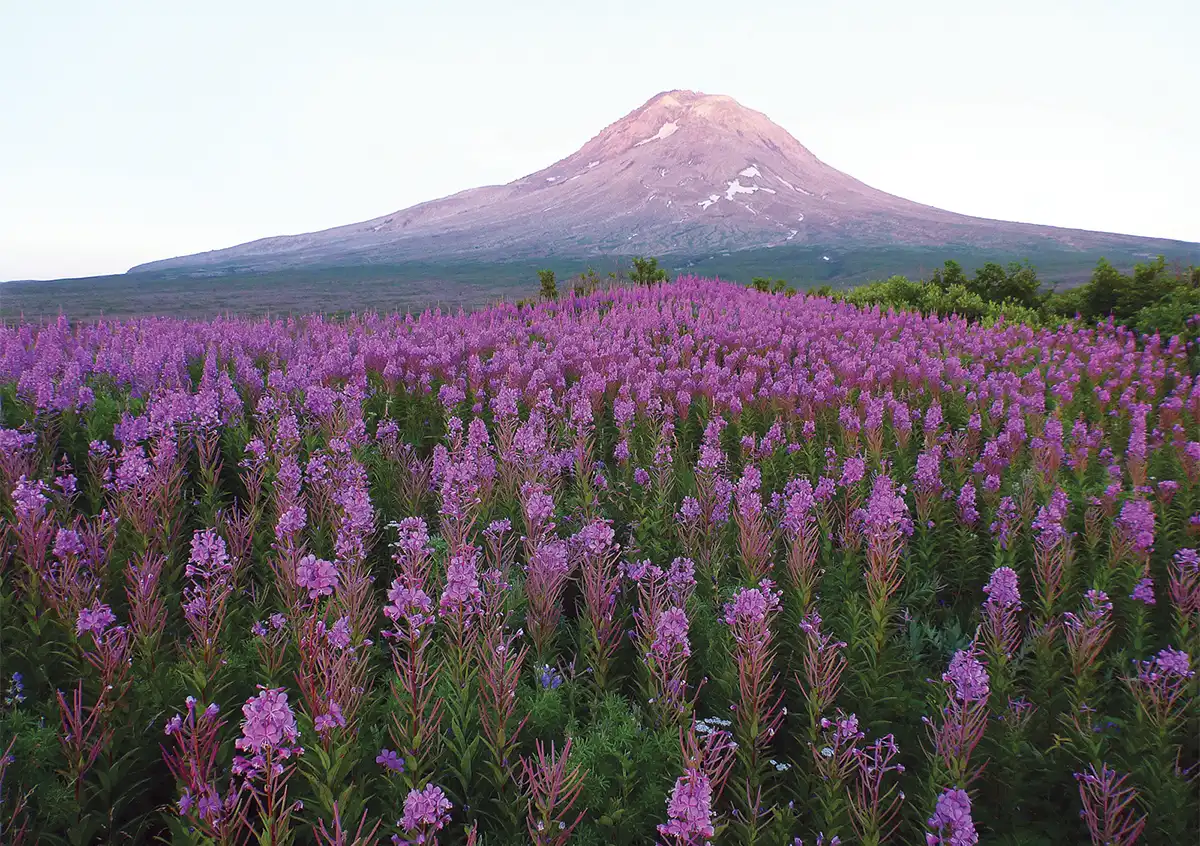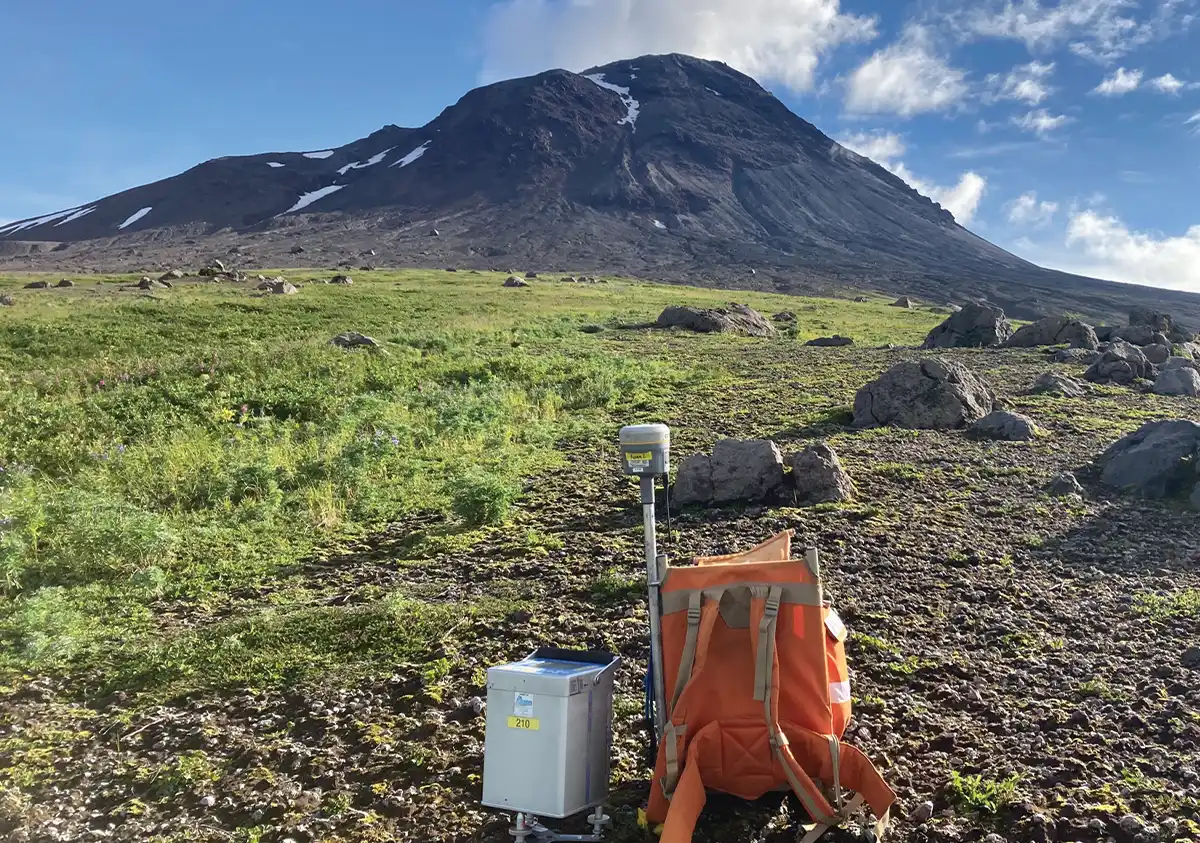eothermal energy exploration is picking up steam in Alaska—literally. In the last three years, the Alaska Department of Natural Resources (DNR) has issued several geothermal exploration permits for use in the Aleutian Arc. One of these applies to the previously untapped Augustine Volcano in Lower Cook Inlet. Meanwhile, the Makushin Geothermal Project near the city of Unalaska is restructuring.
Neither the DNR exploration permits nor the Makushin project are new endeavors; lease sales have been held in the Aleutian Arc, particularly on the stratovolcano Mount Spurr, since 1983, and the Makushin project has been in the works since 2020. However, there’s reason to believe that these more recent developments are better poised for success.
The federal Inflation Reduction Act of 2022 provides new incentives for geothermal development, such as tax credits up to 30 percent through 2032. In May, the Alaska Legislature passed House Bill 50, which mainly relates to storing carbon dioxide deep underground on state lands, but it was amended to include language specific to geothermal exploration. Governor Mike Dunleavy had requested legislation to extend the length of geothermal exploration permits from two years to five.
The US Department of Energy estimates that 8.5 percent of the country’s electricity could be generated by geothermal power by 2050, and more than 28 million homes could be heated and/or cooled by geothermal heat pumps. Alaska, given its location in the geologically active Ring of Fire, remains a focal point for advancing such technology.
A compelling virtue of geothermal is that it’s considered a baseload energy source, says Craig. Unlike other renewables such as wind or solar, which are intermittent, geothermal can continually meet the minimum necessary demand for an electrical grid.
Heat’s not the only concern, though. According to Guy Oliver, director of geoscience and exploration at Ignis Energy (a sister company to Geolog, one of the largest geothermal development companies in the world), an exploitable geothermal resource must meet a few other requirements in order to be successful: sufficient flow rates to extract the resource to the surface (for power production) and proximity to an accessible market.
Currently, two volcanoes in the Aleutian Arc may fit the bill.
The first is, of course, Mount Spurr, an 11,070-foot stratovolcano approximately 80 miles west of Anchorage; and the second is Mount Augustine, another stratovolcano 4,134 feet tall, occupying an island roughly 60 miles southwest of Homer.
Both resources are close to the Railbelt grid, the area between the Kenai Peninsula and Fairbanks that supplies about 75 percent of Alaskans with electricity. Declines in other Railbelt energy resources—such as Cook Inlet natural gas, which is expected to face a serious decline by 2030 according to a 2023 study by the Alaska Division of Oil and Gas—could make geothermal attractive as both an alternative source and a carbon offset.
In 2008, Nevada-based Ormat Technologies was awarded leases to explore more than 35,000 acres of Mount Spurr’s flanks. Several years of testing proved fruitless, and in 2015 Ormat abandoned its efforts. Currently there are two companies still combing Mount Spurr: GeoAlaska and Cyrq Energy out of Salt Lake City.
GeoAlaska is also exploring Augustine, a resource previously untapped for its geothermal potential. John Eichelberger, a professor emeritus at the UAF Geophysical Institute and pioneer of both the Alaska Volcano Observatory and the Krafla Magma Testbed in northern Iceland, believes that Augustine presents a once-in-a-lifetime opportunity. “It’s one of the hottest volcanoes in the Pacific,” Eichelberger says.
GeoAlaska has been gathering geophysical data on Augustine since the summer of 2023. Initial tests suggest that it is worth further study. In March 2023, GeoAlaska partnered with Houston-based Ignis Energy to plan more expansive data collection on Augustine this year.
GeoAlaska has also been proactive in figuring out how to deliver geothermal power, should its exploration prove successful. According to Craig, GeoAlaska entered into an agreement with the Homer Electric Association (HEA) in 2022. While details are confidential, the agreement spurred HEA to apply for and receive grants from the Alaska Energy Authority (AEA) to study electricity transmission from both Mount Spurr and Augustine.
In the case of Augustine, the proposed plan is to transmit power via a submarine cable across Cook Inlet to a power inverter near Anchor Point, which would, in turn, plug into the Railbelt grid. GeoAlaska estimates that Augustine could produce between 50 MW and 100 MW using traditional geothermal methods.

M.L. Coombs | Alaska Volcano Observatory | UAF Geophysical Institute

Esther Babcock | Logic Geophysics & Analytics
Paul Craig | GeoAlaska

One of the most notable examples of this is the Makushin project near Unalaska. The city became interested in the nearby Makushin Volcano as a potential energy source in the ‘80s. Developing the necessary infrastructure, though, proved easier said than done. Fast-forward to 2019, when Bernie Karl stepped in. Karl is credited with not only building the now world-famous Chena Hot Springs Resort from the ground up but with introducing the first geothermal power generator to the state of Alaska in 2006.
In 2020, Karl’s Fairbanks-based Chena Power teamed up with Unalaska’s Native corporation, the Ounalashka Corporation, with the lofty goal of designing, building, and operating a 30 MW power plant to harness Makushin’s energy. The project carried an estimated price tag of $250 million and was expected to be completed in 2024.
As a joint venture, Ounalashka Corporation/Chena Power (OCCP) made good headway: it entered into a thirty-year Power Purchase Agreement (PPA) with the City of Unalaska in 2020, signed an intent to award the engineering construction contract to Ormat in 2021, and secured $2.5 million in federal funding in 2022, along with a $5 million funding commitment from AEA in 2023.
But the announcement did not end the Makushin geothermal project. In the same news release, the City stated plans to resuscitate the project in partnership with the Qawalangin Tribe of Unalaska and Ounalashka. It remains unclear how Ounalashka plans to dissolve its former partnership with Chena Power.
On February 1, 2024, the City of Unalaska submitted a letter of intent to apply for a Climate Pollution Reduction Grant from the US Environmental Protection Agency, with the goal of developing Makushin geothermal. The Environmental Protection Agency’s Climate Pollution Reduction Grant program has $5 billion set aside for ambitious projects that seek to reduce greenhouse gas emissions, up to $500 million per project with no local grant match requirement. The Unalaska City Council submitted an application before the April 1 deadline, according to City Manager William Homka. Grant awards will be announced in October.
Homka hopes the Makushin project will be selected. Unalaska is striving to cut out diesel and the costs associated with it, seeking viable alternatives to provide reliable, baseload electricity for all stakeholders—from individual households to Dutch Harbor seafood processors.
Makushin could blaze a trail for other communities to follow, not just to tap geothermal resources but to strive for true sustainability.
“The power is here,” says Homka, and though he refers specifically to Unalaska, his words ring true for the entire state.